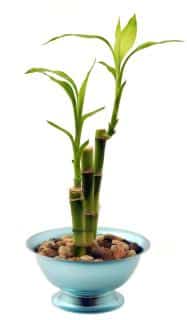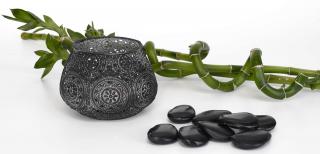

Lucky bamboo – the bringer of good fortune – has become a very successful indoor plant.
Key facts for Lucky bamboo
Name – Dracaena sanderiana
Type – indoor plant
Height – 5 feet (1.5 meters)
Exposure – well-lit
Soil – water and then soil mix
Foliage – evergreen
Flowering – insignificant
Caring for it is very easy, and its lifespan can be extended thanks to the care and good practices we’re sharing with you here.
Read also:
The plant must first develop roots in water before it can be transferred to a pot.
Good news – lucky bamboo is one of the houseplants that releases the most moisture into the air around it. This makes it an ideal choice to add to your indoor moisture oasis! Very helpful for plants that fear dry air.
If your lucky bamboo has grown a bit tall and scrawny, it’s possible to rejuvenate it and produce a second specimen all in one go! Simply:
Keep the older specimen as is: it will start sprouting leaves at a node, just like its counterpart will be sprouting roots!

In summer, avoid placing the plant near a window that faces the equator, and in winter, don’t set it near a radiator.
Remove wilted leaves regularly.
While in water, change the water on a regular basis, more or less 1 or 2 times a month.
This often signals that the plant lacks nutrients.
At this point you can choose to either repot it with soil mix in a pot, or simply provide organic matter by adding liquid fertilizer.
Lucky bamboo actually only “looks” like a bamboo, which is the shape it is given because it isn’t part of the bamboo family that is native to Asia.
Lucky bamboo, also called “Chinese Culm” is actually native to Africa.
However, Asians and most especially the Chinese particularly appreciate this plant.

If you repot your lucky bamboo in soil mix, you’ll be rejuvenating the plant while ensuring it will have a longer life span!